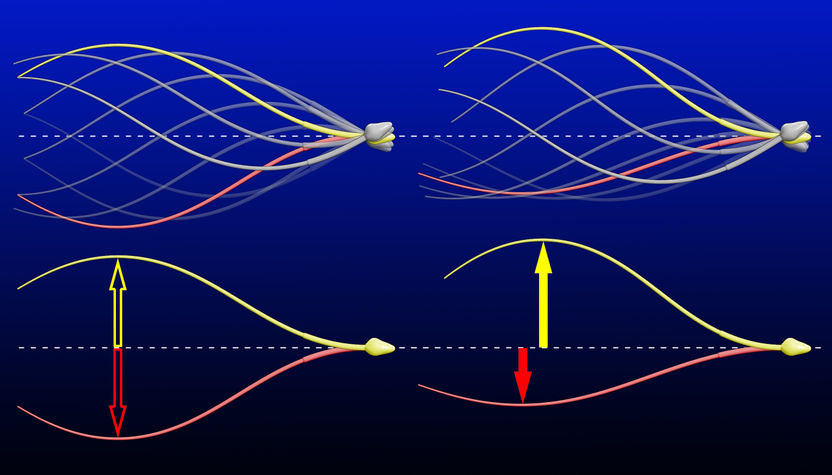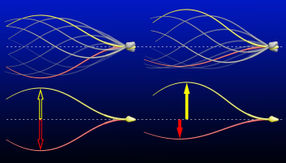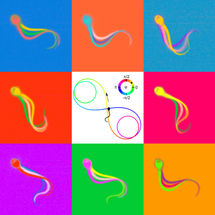Sperm navigate by playing chords
For navigation, sperm use musical tricks
Advertisement
Similar to a guitar string, sperm beat their tail with two different frequencies or “notes”. Scientists from the research center caesar in Bonn, associated with the Max Planck Society, and the Helmholtz research center Jülich published these findings in a recent article in Nature Communications.

Figure 1. Steering by a temporal break of the beat symmetry.
Dr. Luis Alvarez & Dr. René Pascal / Stiftung caesar

Dr. Luis Alvarez & Dr. René Pascal / Stiftung caesar


It is a matter of scientific debate how microswimmers navigate. This fundamental question concerns scientists seeking to understand biological microswimmers, such as sperm, or engineers striving to design synthetic micro-robots.
The sperm tail serves multiple purposes: it is used as a propeller that drives sperm forward, as an antenna that captures and processes sensory stimuli, and as a “rudder” that sets the course accordingly. Sperm swim forward by waving their tail. As the wave travels from the head down to the tip of the tail, liquid is pushed backwards and sperm are propelled forward. For steering, the tail beats asymmetrically to one side, acting like the rudder of a boat; consequently, sperm move on a curved path.
The new study shows that sperm use a surprising mechanism to produce an asymmetric beat. Two different waves travel along the tail: one with a fundamental frequency and another with twice this frequency. To put it in musical terms, sperm play notes of different octaves. The superposition of these two waves results in a wave with an amplitude that changes in time. The tail undulates more to one side compared to the other. This time-modulated wave provides the essential feature for steering: liquid is pushed asymmetrically, but in contrast to the rudder of a boat, the symmetry is broken in time rather than in space. The study also shows that, when sperm sense the female hormone progesterone, the frequency, amplitude, and phase of the two waves is adjusted and thereby also the swimming path. Thus like fine-tuned instruments, sperm play chords orchestrated by the chemical signals encountered while cruising along their path.
Original publication
Guglielmo Saggiorato, Luis Alvarez, Jan F. Jikeli, U. Benjamin Kaupp, Gerhard Gompper, and Jens Elgeti; "Human sperm steer with second harmonics of the flagellar beat"; Nat. Commun.; 2017

























































